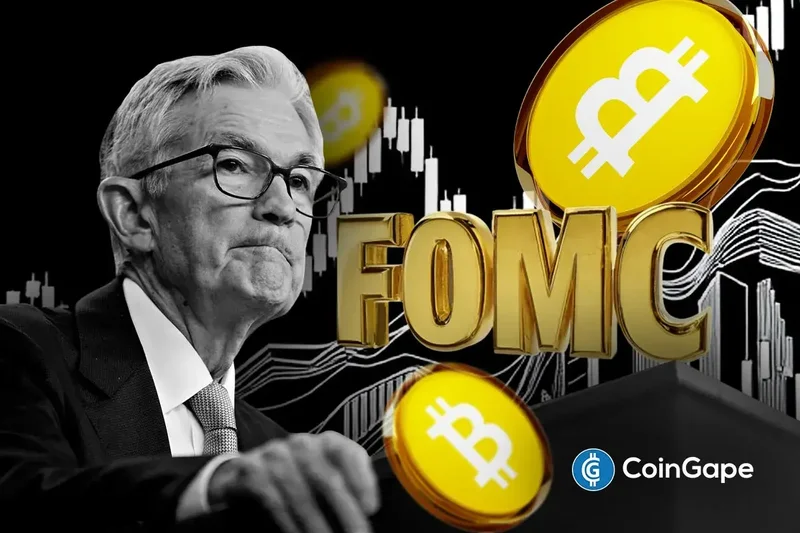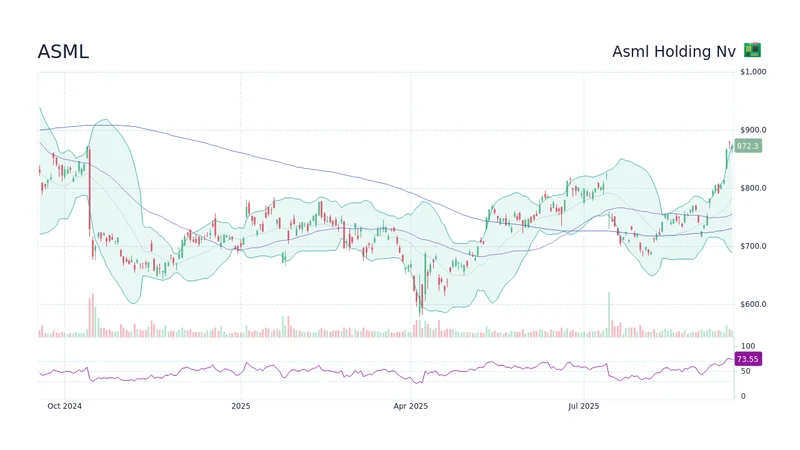Fed's Latest Minutes: What the Data Reveals About Rate Cuts and Internal Disagreement
The Federal Open Market Committee just released the minutes from its September meeting, and if you were looking for a clear, unified signal on the future of the U.S. economy, you came to the wrong place. The headline was a quarter-point rate cut, bringing the federal funds rate to a target range of 4%-4.25%. That was expected. What wasn't expected, and what should concern any serious analyst, is the deep fracture revealed just beneath the surface.
This wasn't a confident, forward-guiding policy decision. This was a reluctant compromise from a committee that is profoundly divided on what to do next.
The data speaks for itself. The "dot plot," which maps out individual members' rate expectations, revealed a committee split right down the middle. Of the 19 participants, a razor-thin majority of 10 believe we'll see two more quarter-point cuts before the year is out. Nine disagree. This is not a consensus; it's a statistical coin flip. It’s the kind of split that signals deep institutional uncertainty, where the next decision could be swayed by a single changed mind or a single piece of surprising data.
And this is the part of the report that I find genuinely puzzling: while the committee is publicly projecting this image of cautious, incremental adjustment, there are clear signs of a more aggressive dovish wing pushing for more. The lone dissenting vote came from newly appointed Governor Stephen Miran, who argued for a more decisive half-point (50 basis point) cut. A bold move for a new governor. Yet, Chair Powell was quick to shut that down in his press conference, stating there was "no widespread support" for such a move.
Really? In a 10-9 vote, how can one definitively say what does or does not have "widespread support"? The line between a narrow majority and a significant minority view is getting blurry. Is Powell managing a consensus, or is he simply representing the winning faction of an internal debate that is far from over?
Navigating in a Data Blackout
The internal division at the Fed is troubling enough, but it’s magnified by an external crisis: the ongoing U.S. government shutdown. The very agencies the Fed relies on for its "data-dependent" approach—the Labor and Commerce departments—are closed for business. This means that as the committee heads into its crucial October 28-29 meeting, it will likely be flying blind.
Think about that. The minutes explicitly state that "downside risks to employment had increased." How, precisely, are they supposed to quantify that risk without the official unemployment and jobs data from the Bureau of Labor Statistics? How can they gauge inflationary pressure when key consumer spending reports are on hold?

This transforms the Fed's task from a data-driven science to something closer to institutional guesswork. It’s like asking a surgeon to operate based on a description of the symptoms without looking at the MRI. The committee can rely on private surveys and anecdotal reports, but these are poor substitutes for the comprehensive, standardized data sets that have underpinned monetary policy for decades. The potential for a policy error—a cut that's too deep or a pause that's too early—grows exponentially when you’re navigating by feel.
The market, for its part, seems to be betting that the Fed will be forced to err on the side of aggression. The primary dealer survey conducted before the September meeting showed a majority expecting at least two cuts by year-end, with about half—to be more exact, around 48%—expecting three. The derivatives market is even more convinced. OIS-implied pricing shows 45 basis points of easing already discounted for the December meeting alone.
This is a significant disconnect. The market is pricing in a reality where the Fed acts decisively to stave off a downturn, a reality much closer to Governor Miran’s 50-basis-point dissent than to Powell’s cautious public stance. It’s a bet that the lack of data, combined with global headwinds (like the Reserve Bank of New Zealand’s surprise 50-basis-point cut), will force the Fed’s hand.
The Dollar's Deceptive Strength
Complicating this entire picture is the curious strength of the U.S. dollar. Typically, the prospect of lower interest rates would weaken a currency. Yet the DXY index is at its highest level since early August. This isn't a sign of intrinsic U.S. economic strength; it's a "cleanest shirt in the dirty laundry" problem. The dollar is rallying because political and economic turmoil is weakening its main rivals, the euro and the yen.
This dollar strength creates a feedback loop. A stronger dollar tightens financial conditions by making U.S. exports more expensive and putting pressure on emerging markets with dollar-denominated debt. This, in turn, can slow global growth and circle back to hurt the U.S. economy, potentially forcing the very rate cuts the market is already pricing in.
So where does this leave us? We have a deeply divided Fed, a critical lack of official economic data, and a market that is betting heavily against the committee’s own stated intentions. The minutes from September weren't a roadmap; they were a snapshot of a committee at a crossroads, unsure of which path to take and unable to read the street signs. The only thing that seems certain is that the calm surface of that 25-basis-point cut hides a turbulent debate underneath.
The Data Doesn't Drive, It Justifies
Let's be clear. The narrative that the Fed is purely "data-dependent" has always been a convenient fiction, a shield to project objectivity. In a data vacuum like this government shutdown, we see the institution for what it is: a collection of individuals with pre-existing economic philosophies. The data, when it’s available, is often used to confirm a bias, not to form one from scratch.
The 10-9 split isn’t about ten people seeing one set of numbers and nine people seeing another. It’s about two competing worldviews clashing. The shutdown doesn't paralyze the Fed; it liberates its members to argue from their core beliefs. The next policy move won't be determined by a CPI print that may or may not be released. It will be determined by which faction—the cautious incrementalists or the aggressive doves—wins the internal argument. The numbers, when they finally arrive, will simply be the justification for a decision that was already made.
Related Articles
The ASML Stock Frenzy: Why Everyone's Suddenly Obsessed and What They're Not Telling You
Let's get one thing straight. Every time I see a headline about ASML’s stock climbing another few pe...
Dow Dives 797 Points: Rate Cut Bets vs. Government Opens
Generated Title: Dow's Wild Ride: Shutdown Ends, But Is the Market Really "Fixed?" The Dow Jones Ind...
Dan Schulman Named New Verizon CEO: What His PayPal Past Means for Verizon's Future
Verizon’s New CEO Isn’t About 5G. It’s About a Quiet Panic. The market’s reaction to the news was, i...
Dow Jones Tumbles: Tech Sell-Off and Rate Cut Uncertainty
Alright, let's get into it. Thursday wasn't pretty if you were watching the tickers. The Dow took a...
Blackstone: Griddle Mania and the Stock Reality
The Brutal Truth About Blackstone: It's Not About "Who," It's About "When" Blackstone, the behemoth...
kathy ireland: Encouraging Reading and Finding Peace
Okay, folks, buckle up. Because what I'm about to tell you isn't just another celebrity-endorsed pro...





